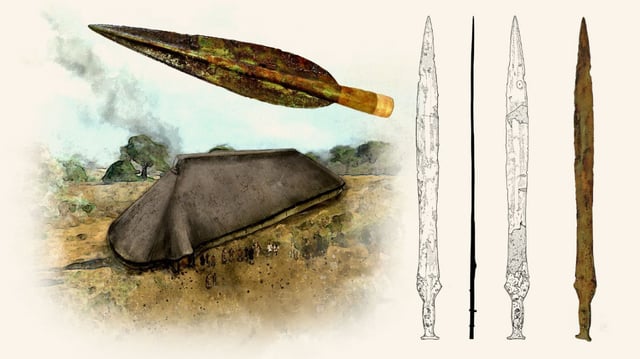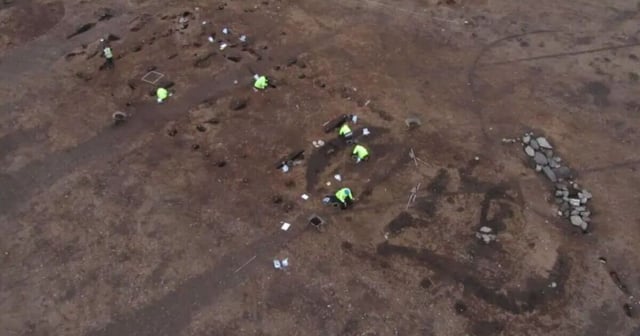Overview
- Guard Archaeology has confirmed the main hall measured 35 m by 9 m, built of oak with opposed doorways, wattle-and-daub walls and a roof supported by massive paired posts.
- A second, smaller hall measuring 20 m by over 8 m was found nearby, representing Scotland’s only known dual-hall complex from around 4,000 BC.
- Excavations in the smaller structure revealed a large hearth containing charred cereal grains and hazelnut shells, pointing to communal feasting and seasonal gatherings.
- Experts processing artefacts have identified a gold-decorated Celtic spearhead and one of Britain’s best-preserved late Bronze Age wood-and-leather scabbards alongside pitchstone and quartz from Arran and the Highlands.
- The elevated site’s proximity to ancient routeways suggests it drew Neolithic farmers from across the region, prompting Angus Council to plan preservation measures.

